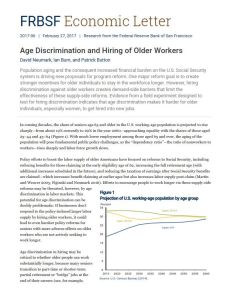
Recommendation
Projections call for the percentage of Americans aged 65 and older to increase from 19% of the working-age population in 2017 to 29% by 2060. This demographic bulge will put enormous strain on Social Security by raising the proportion of nonworkers in the population. An astute analysis from economists David Neumark, Ian Burn and Patrick Button reveals that, despite government efforts to keep older people in the labor pool, discriminatory hiring practices may force them to retire. getAbstract recommends this important and accessible study to economists, employers and social scientists interested in the effects of age bias on older populations.
Summary
About the Authors
David Neumark is an economics professor at the University of California, Irvine, where Ian Burn is a doctoral student in economics. Patrick Button is a Tulane University assistant professor of economics.









Comment on this summary